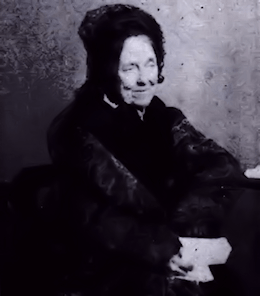Textus Receptus Bibles
Julia E. Smith Translation 1876
| 26:1 | And Job will answer and say, |
| 26:2 | How didst thou help to him of no strength? didst thou save the arm of no strength? |
| 26:3 | How didst thou counsel to him of no wisdom? and didst thou make known help for abundance? |
| 26:4 | And with whom didst thou announce words? and whose breath came forth from thee? |
| 26:5 | The shades shall tremble from under the waters, and their inhabitants. |
| 26:6 | Hades is naked before him, and no covering to destruction. |
| 26:7 | He stretched out the north upon emptiness, he hung up the earth upon nothing. |
| 26:8 | He bound up the waters in his clouds, and the cloud was not rent under them. |
| 26:9 | Holding fast the face of the throne, he spread his cloud upon it |
| 26:10 | He marked out with a compass the law upon the face of the waters, even till the end of light with darkness.. |
| 26:11 | The pillars of the heavens shall be shaken, and be astonished from his reproof. |
| 26:12 | By his power he caused the sea to tremble; by his understanding he smote through pride. |
| 26:13 | By his spirit he polished the heavens; his hand pierced the flat serpent |
| 26:14 | Behold these the ends of his ways; how transient a sound of the word was heard in him! and the thunder of his might who shall understand? |

Julia E. Smith Translation 1876
The Julia Evelina Smith Parker Translation is considered the first complete translation of the Bible into English by a woman. The Bible was titled The Holy Bible: Containing the Old and New Testaments; Translated Literally from the Original Tongues, and was published in 1876.
Julia Smith, of Glastonbury, Connecticut had a working knowledge of Latin, Greek and Hebrew. Her father had been a Congregationalist minister before he became a lawyer. Having read the Bible in its original languages, she set about creating her own translation, which she completed in 1855, after a number of drafts. The work is a strictly literal rendering, always translating a Greek or Hebrew word with the same word wherever possible. Smith accomplished this work on her own in the span of eight years (1847 to 1855). She had sought out no help in the venture, even writing, "I do not see that anybody can know more about it than I do." Smith's insistence on complete literalness, plus an effort to translate each original word with the same English word, combined with an odd notion of Hebrew tenses (often translating the Hebrew imperfect tense with the English future) results in a translation that is mechanical and often nonsensical. However, such a translation if overly literal might be valuable to consult in checking the meaning of some individual verse. One notable feature of this translation was the prominent use of the Divine Name, Jehovah, throughout the Old Testament of this Bible version.
In 1876, at 84 years of age some 21 years after completing her work, she finally sought publication. The publication costs ($4,000) were personally funded by Julia and her sister Abby Smith. The 1,000 copies printed were offered for $2.50 each, but her household auction in 1884 sold about 50 remaining copies.
The translation fell into obscurity as it was for the most part too literal and lacked any flow. For example, Jer. 22:23 was given as follows: "Thou dwelling in Lebanon, building as nest in the cedars, how being compassionated in pangs coming to thee the pain as in her bringing forth." However, the translation was the only Contemporary English translation out of the original languages available to English readers until the publication of The British Revised Version in 1881-1894.(The New testament was published in 1881, the Old in 1884, and the Apocrypha in 1894.) This makes it an invaluable Bible for its period.